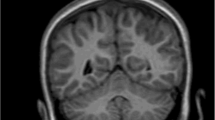Summary.
Grisel's syndrome involves the subluxation of the atlanto-axial joint from inflammatory ligamantous laxity following an infectious process in the head or neck. It is a rare disease usually affecting children, but infrequent adult cases do occur. Today, due to the widened use of antibiotics and availability of MR imaging, some cases presenting with neck pain, resulting from the infectious inflammation of C1 and C2 but without pronounced subluxation, can be a challenging problem for most neurosurgeons. Several theories have been proposed to explain the pathogenesis of inflammatory subluxation. The primary treatment of Grisel's syndrome is medical. The underlying infectious organism must be isolated and appropriate antibiotics must be prescribed. The subluxation is reduced in holter or skeletal traction. This paper reports two cases of infection-related atlanto-axial subluxation in two adults. The literature on this subject is briefly reviewed.
Similar content being viewed by others
Author information
Authors and Affiliations
Additional information
Published online January 14, 2003
Correspondence: Dr. Hasan Çağlar Ugˇur, Ankara U¨niversitesi Tip Fakültesi, Nöroşirurji Anabilim Dalı 06100 Samanpazarı, Ankara, Türkiye.
Rights and permissions
About this article
Cite this article
Uğur, H., Çağlar, S., Unlu, A. et al. Infection-related atlantoaxial subluxation in two adults: Grisel syndrome or not?. Acta Neurochir (Wien) 145, 69–72 (2003). https://doi.org/10.1007/s00701-002-0979-5
Issue Date:
DOI: https://doi.org/10.1007/s00701-002-0979-5




